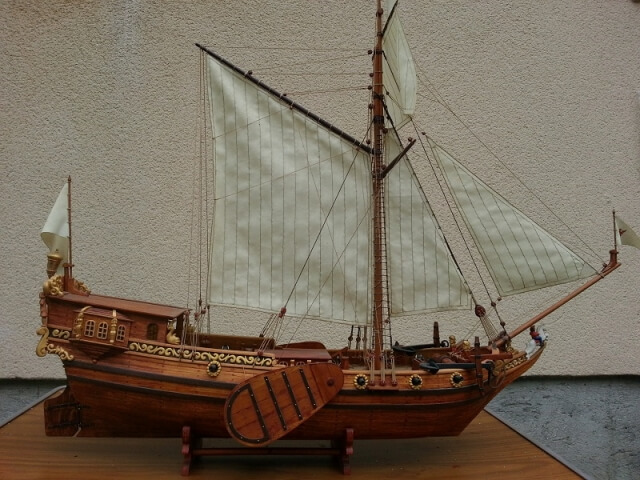⚓ Dutch Yacht ⚓
 XVII. century
XVII. century

 A holland yacht...
A holland yacht...

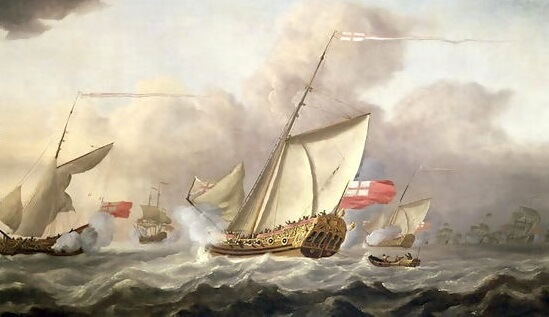 Cornelis van de Velde:The Royal Yacht Mary Exchanging Salutes
Cornelis van de Velde:The Royal Yacht Mary Exchanging Salutes
Talán meglepő a tény, de a yacht szó Holland eredetű és magát a hajótípust is ők találták ki.
Eredetileg a definíció szerint könnyű, gyors vitorlás hajó, amelyet a holland haditengerészet, használt hogy fellépjen a kalózok és más törvényszegők ellen, a németalföldi sekély vizeken.
Az első példányok közül egy "Mary" nevezetű, (15.8 méter) 1660-ban került Angliába, a Hollandok adományozták II. Károly királynak, megteremtve ezzel a szabdidős hajózást és a sznobizmus netovábbját.

The Dutch Yacht
When the yacht came into existence in Holland the term applied to the vessel Jaght Schip. It denoted swiftness and probably, chasing or hunting; for the ancient yacht of Holland was put to a variety of uses. After a time, however, Schip was abandoned, Jaght only being used. From a Dutch-Latin dictionary, published at Antwerp in 1599, we trace the etymology of the word Jaght, which takes its root in Jaghen, meaning to hunt, to chase, to pursue, to strive after; rapid motion, haste, or hurry; also meaning to tow with horses. From this is derived the slang word Jaghten, meaning to hurry up, to drive forward, to urge to greater speed; also the word Jaght—the chase, hunt, hunting.
When yachts were first used and built in Holland is not known; probably at a very early date. Naturally, from the nature of the country, they were a necessity, as were the private carriages and public coaches in other countries before the days of steam; and the various types of yachts used in Holland were as numerous as their employment; we should feel deeply indebted to the Dutch artists of that period, upon whose canvas yacht-portraits have frequently been delineated.
The most ancient yacht of which diligent and careful research has been able to discover a portrait, is one that was owned by the burgomasters of Amsterdam about the year 1600. The original picture is executed by Rool, in India ink on parchment. Worn by age, it nevertheless gives the details of the hull and rig with the fidelity and minuteness for which the artists of Holland are justly famous. This yacht was probably used by the burgomasters in their various official duties afloat, to their great comfort and enjoyment: a portrait is also given of the yacht owned by Maurice of Nassau, the younger son of William the Silent, who died at The Hague on April 23, 1625.
In 1638 Queen Mary of France visited Holland, receiving a series of splendid ovations at the various cities en route. A representation of the review in her honor by the yachts of Amsterdam is here given.
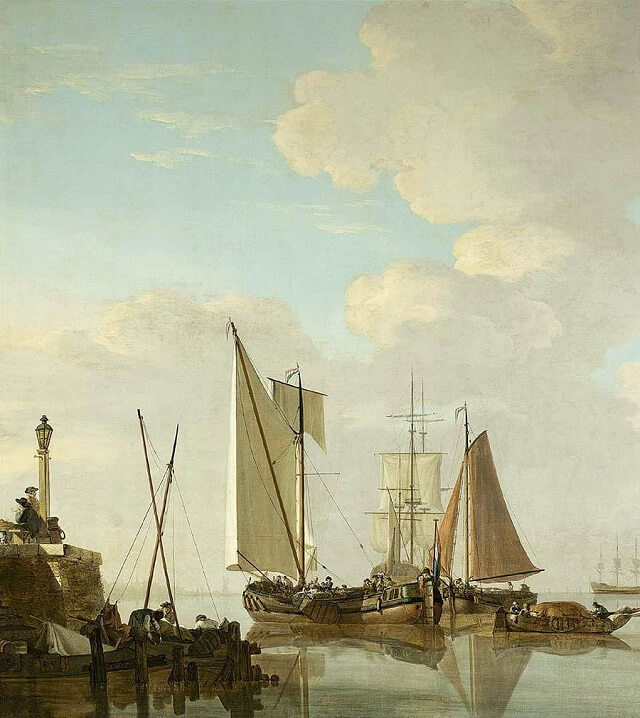
Landscape with a Shepherd 1800-10 Oil on wood, 69 x 91 cm Rijksmuseum, Amsterdam
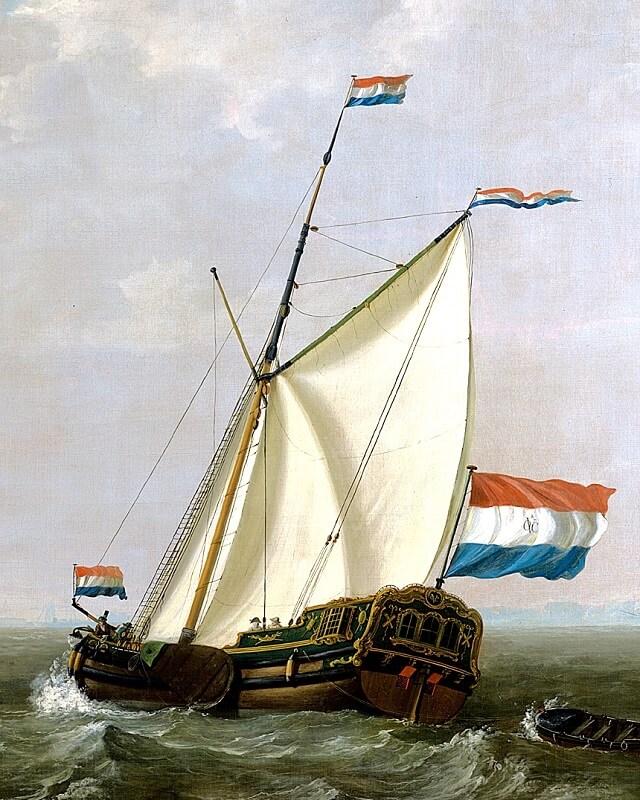
An 18th-century Dutch yacht owned by the Rotterdam chapter of the Dutch East India Company. This yacht has the gaff rig and leeboards of the period
Some particulars of the seventeenth-century yachts of Holland are given in the Dictionaire de Marine, published in Amsterdam, 1702. The measurements in this work are in the Rhenish foot of 11 Rhenish inches, equal to 12.35652 English inches; the following being the dimensions for a small yacht: Length from stem to stern-post, 42 feet; breadth, 9 feet 4 inches; depth at the wale, 3 feet 8 ½ inches. The keel, or, as it was called, "sole," was 6 feet wide amidships, and 5 inches thick, being a combination of keel and garboards, and 30 feet long. The stern-post was 6 feet 4 inches in length, with 1 foot 5 ½ inches rake; 6 inches thick inside, and 4 inches outside; 8 inches wide at the head, and 3 feet six inches at the heel. The stem was 6 feet 6 inches high, and 10 feet 6 inches rake; 2 feet wide at the head, and 1 foot 2 inches where it joined the keel; 6 inches thick on the inside, and 4 inches on the outside, with 14 inches rounding. The planking was 2 inches thick, and the wale 4 inches thick, and 5 inches wide; the planking above the wale, 12 inches wide, and 1 ½ inches thick. The floor timbers were 4 ½ inches square, and 3 ½ inches at the wale. Yachts of this type were-steered with iron tillers, slightly curved, and were fitted with leaden pumps on both sides, to allow pumping on either tack.
The Staaten Jaght, or State yacht, was used for various purposes: to regulate shipping, prevent smuggling, collect revenue, and the like. The Admiraliteit Jaght, or Admiralty yacht, was used by admirals in connection with their fleets, frequently performing important service; they were attached to the fleet of every Dutch admiral during the naval wars of the seventeenth century. In the memorable battle of June 3, 1665, Admiral Opdam
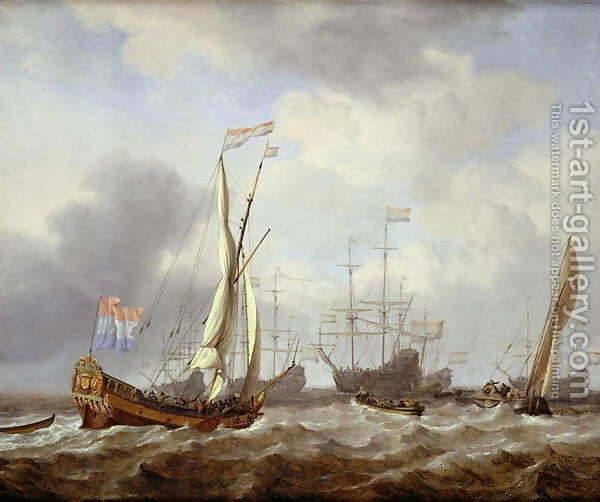
Willem van de, the Younger Velde:Dutch States yacht sailing in a light breeze
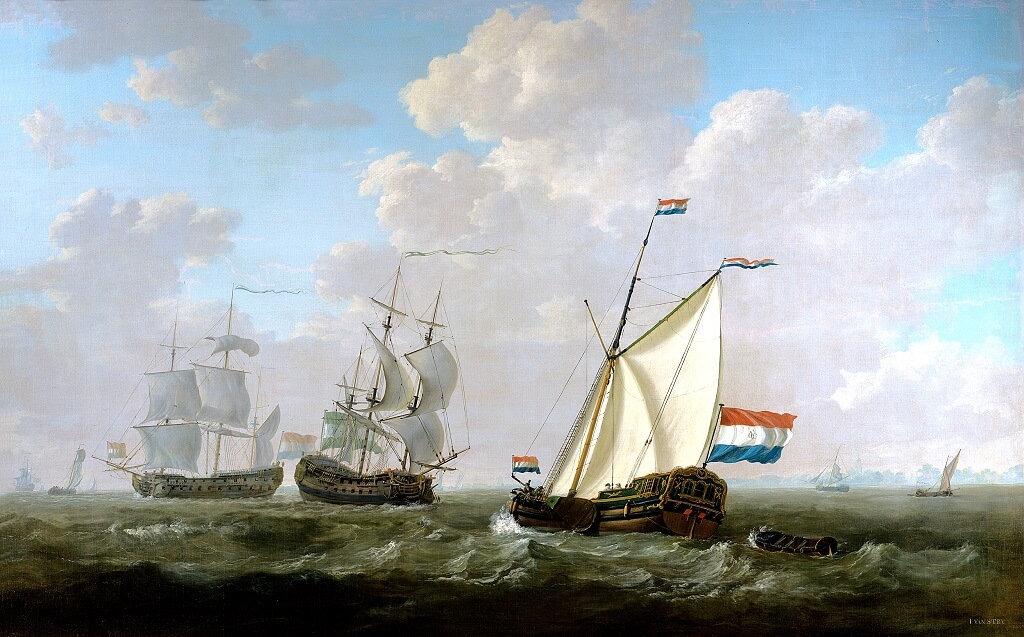
Jacob van Strij - Het jacht van de kamer Rotterdam begroet een Oostindiëvaarder
To place the yacht of Holland in true relation to the vessels of her time, the portrait of a Dutch trading-craft, not constructed especially for speed, is here given. It is called a Damlooper, the type existing to the present day.
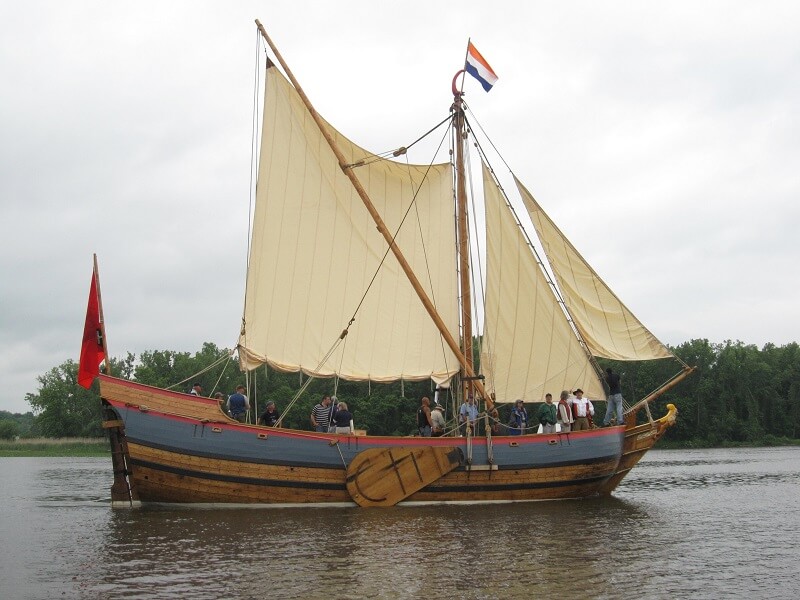 A damlooper o present days
A damlooper o present days
